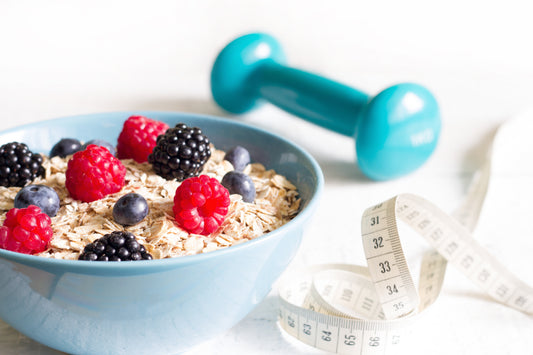Capsule materials play a key role in the pharmaceutical and supplement industries. Though often flying under the radar, they're essential for the effective delivery of active compounds.
Over time, as medical science has progressed, so too have the materials used for the encapsulation. Fast forward to today, and we have a whole range of options.
But some might wonder, does the outside of the capsule even matter? Isn't it what's on the inside that counts?
Why you shouldn't overlook capsule material
Capsules serve as carriers for drugs and supplements, providing an effective means of administration. They encase the bioactives, ensuring precise dosage and straightforward consumption.
But the choice of capsule material affects much more than just the product's functionality.
Think of aspects like allergenic potential, suitability for dietary restrictions, health properties, and ecological impact. All of these can vary with each encasing compound.
Given these considerations, let's examine the most popular encapsulation materials out there:
HPMC

Hydroxypropyl Methylcellulose, also known as HPMC or Hypromellose, is a semi-synthetic polymer that has its roots in cellulose, the fiber that's naturally found in the cell walls of plants. (1)
Because HPMC capsules aren't derived from animal sources, they're suitable for vegetarians and those with dietary or religious restrictions.
HPMC capsules are generally easy on the stomach, though they may cause digestive discomfort in some. (2)
Zeroing in on the quality, HMPC's high moisture resistance effectively preserves the potency of the content over the shelf life. (3)
The Dark Side of HPMC Capsules
It's true that HPMC is the go-to capsule material for most supplement companies, thanks to its stability and plant origin.
And while HPMC may seem like a solid option, it does come with a serious downside...
Environmental Impact of HPMC Production
The controversy surrounding HPMC stems from its production process, in which cellulose is treated with highly toxic substances—specifically, methyl chloride and propylene oxide. (4)
This crucial step in HPMC synthesis raises serious environmental red flags. Handling these chemicals poses a potential risk of emitting hazardous air pollutants, a concern emphasized by the US Environmental Protection Agency (EPA).
That is why official bodies like the National Organic Standards Board (NOSB) prohibit the use of HPMC in organic products. (5)
And, to make things worse, the crops used in HPMC production, like cotton and wood pulp, commonly undergo pesticide treatments further adding to the environmental impact. (6,7)
Gelatin

Gelatin is the byproduct of collagen found in bones, skin, and connective tissues of animals. (8)
Not exactly a gourmet ingredient.
But let's give credit where it's due. Gelatin is quite the multitasker - it can be shaped into both hard and soft capsules.
Being one of the cheapest and long-standing options for encapsulation material, gelatin is certainly a popular choice.
Still, despite its popularity, gelatin comes with a fair share of drawbacks.
Environmental and Ethical Considerations of Gelatin
Gelatin's primary source, animal connective tissues, raises questions about ethical treatment and sourcing. Large-scale gelatine production often involves factory farming, where animals may endure confined spaces and less-than-ideal living conditions. (9) Besides, from the resources required to raise and process the animals to the waste generated in the production process, the environmental impact of gelatine production is far from low. (10)
Allergenic Potential and Religious Dietary Restrictions
Allergies to gelatine can be seen in those sensitive to specific animal proteins. (11) It's also a no-go if you're keeping it vegetarian, vegan, or aligning with certain religious food practices.
Functional Implications
Gelatin has the potential to bond with actives in the capsule (referred to as crosslinking) which consequently leads to less efficient absorption.
It is also not suitable for hygroscopic substances and is likely to promote bacterial growth when stored in a humid environment. (12)
Safety
While likely minimal, gelatin from bovine and porcine sources may pose a risk of spreading BSE (Mad Cow disease), a rare but serious neurodegenerative disease potentially transmissible to humans. (13)
Luckily, there are far safer alternatives out there...
Pullulan

Pullulan is a natural polymer, akin to gum, obtained through microbial fermentation.
In short, the production process involves the breakdown of tapioca or other starches by the fungus A. pullulans into glucose units, which are subsequently reassembled into pullulan. (14)
Much like the well-known choices like HPMC and gelatin, it does a commendable job of protecting capsule contents.
In fact, pullulan capsules are even more effective than HPMC in preventing moisture absorption. (15)
Let's look at other ways in which pullulan may outperform its competitors.
Non-animal origin benefits
Pullulan capsules are vegan which aligns seamlessly with all dietary preferences and ethical beliefs.
Environmentally-friendly
Unlike gelatine and HPMC, pullulan is cultivated at a low environmental cost. It doesn't necessitate the harvesting of plants or animals. Pullulan is also made from fully renewable resources. (16)
And, its production yields no ecologically harmful byproducts or employs toxic materials, as is the case with HPMC.
Safety
Pullulan is considered hypoallergenic. It's also non-toxic, non-carcinogenic, and well-tolerated by the body, making it a very safe choice for a capsule material. (17)
Prebiotic properties
Research shows that pullulan can act as a prebiotic, helping friendly gut bacteria like Bifidobacteria and Lactobacilli to thrive. (18, 19)
So not only does it securely deliver capsule contents, but it may also support a happy gut - a win-win scenario!
Vegan softgels

What exactly are vegan softgels made of?
Well, it depends.
Most vegan softgels are primarily composed of starch, glycerin, and water. Additional compounds may be introduced to ensure the right texture and integrity of the softgel. For instance, Performance Lab's NutriGels® utilize gellan gum and pectin to achieve the desired properties.
Be cautious, as some vegetarian softgels might include carrageenan - a derivative from red seaweed that could potentially lead to inflammation and gastrointestinal problems. (20)
So, what are the benefits of Vegan Softgels?
To begin with, they're plant-based and eco-friendly, making them suitable for a variety of dietary and religious preferences, as well as for those with allergies to animal protein.
Additionally, vegan softgels may provide better stability compared to gelatin, which tends to be more sensitive to high temperatures and humid conditions. (21)
Conclusion
Given the environmental and health concerns surrounding other materials, pullulan, and vegan softgels are no-brainers.
They're eco-friendly, good for the body, and cater to all dietary preferences.
Most importantly, they effectively protect the safety and potency of the capsule's contents. Just like good capsules are supposed to.
And for all these reasons, you'll only find pullulan and vegan softgels in Performance Lab® formulas. It's a conscious commitment to both quality and sustainability.
References:
- https://www.ingentaconnect.com/content/ben/raddf/2021/00000015/00000001/art00007
- https://www.sciencedirect.com/science/article/pii/S1933287409002001
- https://journals.library.ualberta.ca/jpps/index.php/JPPS/article/view/8870
- https://www.epa.gov/stationary-sources-air-pollution/cellulose-products-manufacturing-national-emission-standards
- https://www.ams.usda.gov/sites/default/files/media/Hydroxpropyl%20Methylcellulose%20TR.pdf
- https://issuu.com/pan-uk/docs/cottons_chemical_addiction_-_update?e=28041656/62705601
- https://aidenvironment.org/wp-content/uploads/2022/06/Aidenvironment-report-on-Royal-Golden-Eagle-31May22.pdf
- https://books.google.co.uk/books?hl=en&lr=&id=QJfIL3FfG4cC&oi=fnd&pg=PR5&ots=oPimpD2TB6&sig=6bt96EzZ29nTx5AgNnCtpgOjhqU#v=onepage&q&f=false
- https://academic.oup.com/phe/article/8/3/246/2362362
- https://www.mdpi.com/2227-9717/9/12/2227
- https://e-century.us/files/ijcem/10/7/ijcem0033241.pdf
- https://www.ijprt.org/index.php/pub/article/view/18/18
- https://helda.helsinki.fi/server/api/core/bitstreams/7ec03f56-1297-431b-a236-791c1e666841/content
- https://www.researchgate.net/profile/Deepak-Kumar-43/publication/260320595_An_Insight_To_Pullulan_A_Biopolymer_in_Pharmaceutical_Approaches/links/546c45f60cf2f5eb18092f2b/An-Insight-To-Pullulan-A-Biopolymer-in-Pharmaceutical-Approaches.pdf
- https://www.sciencedirect.com/science/article/abs/pii/S0141813020332621
- https://www.sciencedirect.com/science/article/pii/S0924224422001613
- https://www.sciencedirect.com/science/article/abs/pii/S0141813023002398
- https://www.jstage.jst.go.jp/article/jag1994/41/4/41_4_413/_pdf/-char/ja
- https://pubmed.ncbi.nlm.nih.gov/35956737/
- https://ehp.niehs.nih.gov/doi/abs/10.1289/ehp.01109983
- https://aiche.confex.com/aiche/2022/meetingapp.cgi/Paper/644247














